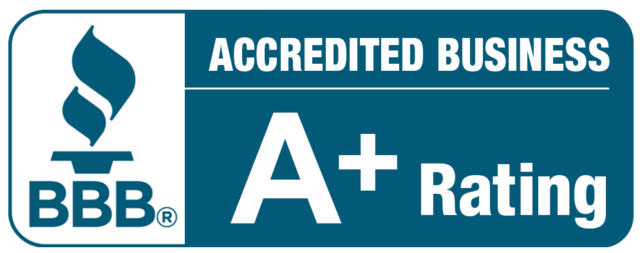Do want to know how to sponge bath a paralyzed client?
Running a homecare service or being in a position where you have to care for a paralyzed client can be a daunting task especially when it’s time to bathe them. Not only do you have to put in a lot of effort and physical strength, but you also have to do it the right way so they do not feel hurt or bad about their condition.
The good thing about the situation is that there is a guide to help you bathe any of your paralyzed clients or loved one easily without hassle or expending more energy than required. In this guide, we lead you on proven steps and what to do to sponge bath a paralyzed client. You may wonder why sponge bathes your client. Why not shower? We have answered that question in detail in this guide.
However, first things let’s explore how you get to know whether or not your client is paralyzed.
How Do I Tell If My Client Is Paralyzed?
If you are working with the client for the first time asides from being told that he/she is paralyzed, you can be able to tell. A client who is paralyzed may exhibit a variety of symptoms and signs that indicate a loss of muscle function or movement. These symptoms may vary depending on the cause and severity of the paralysis.
Here are some common signs that will indicate that a client may be paralyzed:
1. Loss of Sensation
Paralysis can cause a loss of feeling in certain areas of the body. This may include a lack of sensation in the arms, legs, or other body parts. So when your client or loved one feels little or no sensations on his/her body that could be an indication or sign that he/she may be paralyzed.
2. Inability to Move
When there is no sensation, it could result in a lack or inability to move a part or whole of the body. Paralysis can also result in the inability to move specific muscles or body parts. This may include difficulty with walking, standing, or lifting objects.
3. Muscle Spasms
In some cases, paralyzed muscles may experience involuntary contractions or spasms. Watch out for that as that may be a sign or indication of paralysis.
4. Numbness or Tingling
Some clients may experience a sensation of numbness or tingling in the affected area. Numbness and tingling are common symptoms of paralysis, especially in cases where the paralysis is caused by nerve damage.
For example, if a person has a spinal cord injury that results in paralysis, they may experience numbness or tingling in the affected areas. This is because the spinal cord serves as the main pathway for transmitting sensory information from the body to the brain. When this pathway is damaged, the brain may not receive accurate or complete information about sensations in the affected area.
5. Changes in Reflexes
Paralysis can cause a loss of normal reflexes in the affected area. When a nerve is damaged, it can no longer transmit signals between the brain and the muscles. As a result, the muscles in the affected area may not respond to stimuli as they normally would.
For example, if a client has paralysis in their legs, they may not be able to move or feel their legs. They may also have a loss of normal reflexes, such as the knee-jerk reflex, which is a common reflex that is tested by tapping the knee with a reflex hammer. The absence of this reflex can be a sign of nerve damage or paralysis.
6. Loss of Bladder or Bowel Control
Depending on the location and severity of the paralysis, clients may also experience a loss of control over bladder or bowel function.
What are the equipment or items I need to bathe a paralyzed client?
When preparing to sponge bath a paralyzed client, it is important to have the necessary equipment and items on hand to ensure their safety and comfort. Here are some of the essential items you will need:
- Disposable Gloves – It is important to wear disposable gloves to protect yourself and the client from infection.
- Warm Water – To wet the washcloth and sponge the client’s body.
- Washcloths – You will need several washcloths to clean the client’s body.
- Towels – You will need several towels to dry the client’s body.
- Mild Soap – You will need a mild soap that is gentle on the skin to clean the client’s body.
- Basin or bathing bowl – A basin is useful for holding water and making it easier to sponge bath the client.
- Waterproof Sheet or Towel – A waterproof sheet or towel can be used to protect the bed or surface where the client will be bathed.
- Roll of Paper Towels – Paper towels can be used to dry and clean the client’s skin.
- Bathrobe or Blanket – A bathrobe or blanket can be used to cover the client during the sponge bath and keep them warm after the bath.
- Chair or Stool – If the client is being bathed in a sitting position, a chair or stool can be used to make the process easier and more comfortable for both the client and caregiver.
It is important to ensure that all these items must be clean and sanitized before and after each use to prevent the spread of infection. Additionally, it is important to follow proper hygiene practices, such as washing your hands before and after the sponge bath, to further prevent the spread of infection.
Step-by-step Guide On How To Sponge Bath A Paralyzed Client
Now you can identify a paralyzed client, it is of utmost professionalism to care for them in the best way possible. As earlier stated, caring for a paralyzed client can be challenging, especially when it comes to maintaining their personal hygiene.
One way to effectively care for a paralyzed client’s personal hygiene is to sponge bath him/her. Sponge bathing is one way to ensure that the client remains clean and comfortable according to Caregiver Action Network. However, it is essential to handle the process with care to avoid any discomfort or injuries. Here we discuss the steps to sponge bath a paralyzed client without difficulty:
Step 1: Gather Bathing Supplies
Before you begin the sponge bath, make sure that you have all the necessary supplies. This includes a large bowl of warm water, washcloths, towels, soap or body wash, gloves, and a waterproof pad. You can also use specialized products designed for bathing paralyzed clients, such as no-rinse cleansers and disposable washcloths.
Step 2: Prepare the Bathing Room
The room should be warm and free from any drafts. Ensure that there is adequate lighting and ventilation. Clear the area of any clutter, and place the waterproof pad on the bed or chair where the client will be bathed.
Step 3: Position the Client Comfortably
Help the client to lie comfortably on their back, or sit them up in a chair with support for their head and neck. Use pillows or rolled towels to provide additional support and comfort. If the client is sensitive to temperature changes, cover any areas of their body that are not being bathed with a towel. Communicate with them to ensure they are comfortable.
Step 4: Wash One Area Of The Body at a Time
Begin by washing one area of the body at a time, starting with the face, neck, and chest. Dip the washcloth in warm water and wring out the excess before gently wiping the area. Use a separate washcloth for each area to prevent cross-contamination.
Step 5: Dry Each Area
After washing each area, dry it thoroughly with a clean towel. Be careful not to rub the skin too hard, as this can cause irritation or discomfort. Pay particular attention to areas such as the groin, underarms, and between the toes, which are prone to developing moisture and bacteria.
Step 6: Repeat the Procedure for Other Areas
Continue washing and drying the rest of the body, including the arms, legs, back, and buttocks. If the client has a catheter, take extra care when cleaning around the area to prevent infection.
Step 7: Lift Them Out Of The Bowl
Gently lift your client out of the bathing bowl. If you can not do the lifting alone, do so with the assistance of another homecare agent around. This is to ensure there are neither falls nor accidents on your part or the client’s part.
Step 8: Apply Lotion
Once the client is clean and dry, apply lotion to any dry or cracked areas of the skin. This will help to keep the skin moisturized and prevent irritation. Ensure the lotion is not irritating or allergic to the clients.
Step 9: Cloth them appropriately
Paralyzed clients need not wear tight or stuffy cloth. Ensure to clothe them using comfy wear. See our guide on Important Clothing Considerations for People Who Use Wheelchairs and How to Dress and Undress Clients with Partial Stroke.
Step 10: Dispose of Supplies
Dispose of all used supplies in a designated bin, and wash your hands thoroughly with soap and water.
Conclusion
Sponge bathing is one of the ways to maintain the personal hygiene of paralyzed clients. Although it can be challenging, with the right approach, it can be done without hassle. By following these steps we have highlighted and taking the necessary precautions, you can help to maintain your client’s personal hygiene and ensure their comfort.
In addition to these steps, it is essential to communicate with the client throughout the process to ensure that they are comfortable and to address any concerns they may have. You can also consult with a healthcare provider or a professional caregiver for further guidance.
Talking about professional caregivers, we at Good hands Home Care services are open 24/7 to offer the best care to our clients at affordable cost.
At Good hands home care services, we have trained staff who have mastered the art of giving care efficiently with empathy, active listening, calm, and professionalism to effectively care for all clients. Contact us via email at [email protected] or call us at +1-317-742-4135.




